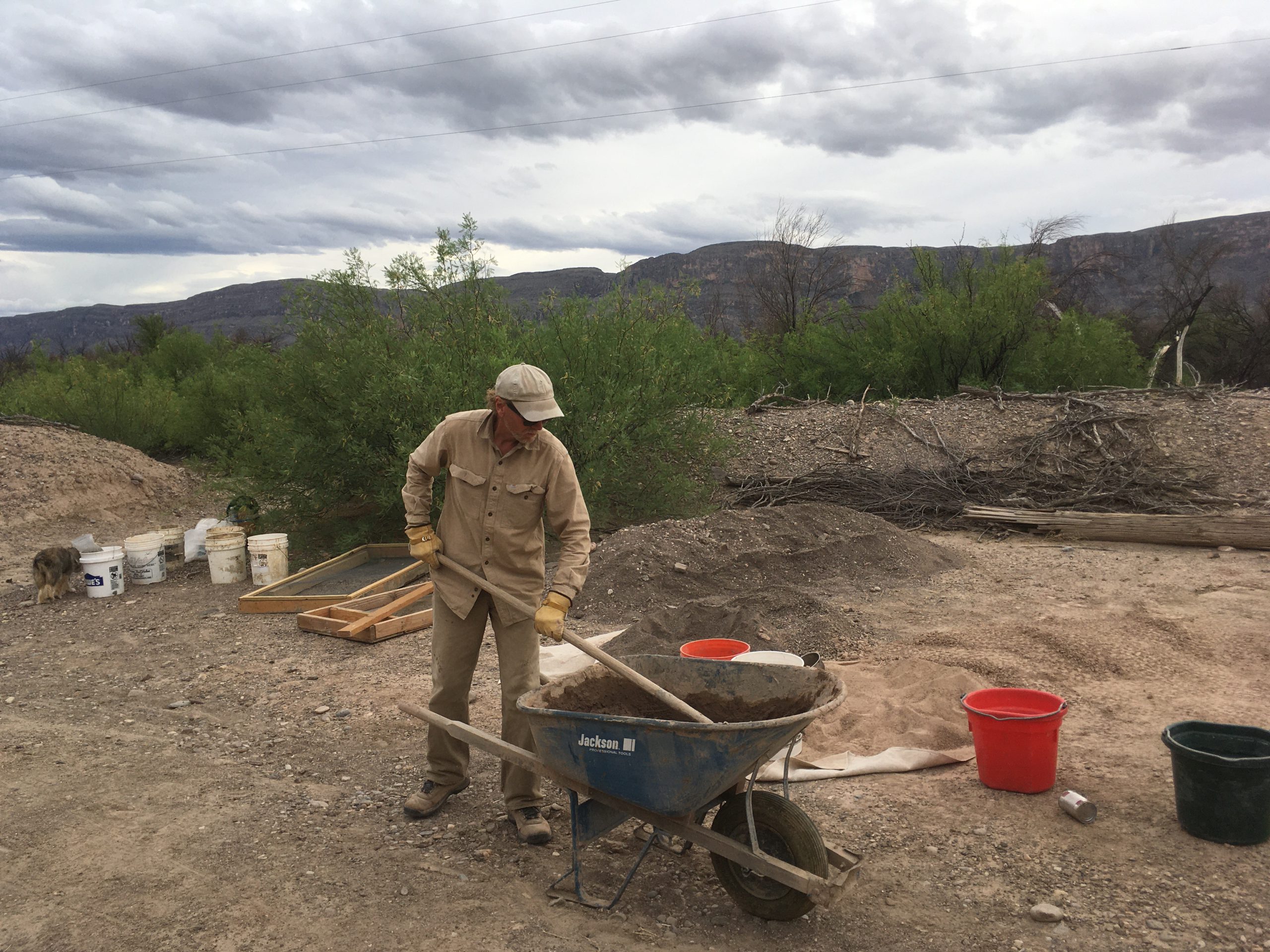Over the Thanksgiving holiday, CBBS senior project archeologist, David Keller, conducted adobe testing at Castolon in Big Bend National Park in preparation for a major historic preservation effort on the Alvino and Dorgan houses under a cooperative agreement with the National Park Service. The focus of the effort was to determine the most water resistant mud plaster mix using locally sourced clay. Keller’s path to discovery has been a circuitous one. Due to scant documentation of previous preservation efforts, it took a bit of detective work along with laboratory analysis of plaster samples to essentially reverse-engineer a mud plaster made by Mexican nationals from the border hamlet of Santa Elena in 1990. This summer, the clay source was finally relocated and, during this visit, Keller’s objective was to “dial in” the best mix ratio using floodplain clay tempered with horse manure. It’s a mix that has turned out to be the most enduring mud plaster yet applied to the Alvino house. With the help of two Student Conservation Corps interns, a total of 22 adobe bricks of differing ratios were made and are now drying in preparation for a final testing phase that will determine which of the mixes is the most water resistant. That phase should happen in the coming weeks with the major thrust of the preservation effort scheduled for February of 2021. Stay tuned for updates!
Visit our Facebook to view more photos of the project.


